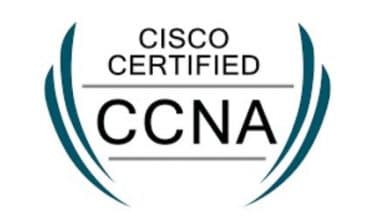In recent times the role of Learning Management Systems (LMS) in higher education has evolved rapidly, and it continues to evolve even as more technological advances come in. This has further increased the need to be careful when choosing the right higher made As colleges and universities expand digital learning, choosing the right LMS has never been more critical. Today’s platforms go beyond basic content delivery—they power student engagement, track learning outcomes, and support hybrid and mobile learning environments.
Whether you’re a university IT administrator, academic leader, or part of an edtech procurement team, here are some of the key features you should look out for in a higher education LMS in 2025:
#1. User-Friendly Interface and Customization
First impressions matter—especially for students navigating their courses online. An LMS with a clean, intuitive interface reduces the learning curve for both instructors and learners.
Key features to look for:
- Easy-to-navigate dashboard for managing classes, assignments, and notifications
- Custom branding to reflect institutional identity
- Personalized course layouts to support different teaching styles
A customizable LMS helps universities align the system with their pedagogy and branding goals.
#2. Mobile-First and Cross-Platform Compatibility
Mobile access is non-negotiable in this time and age. With students relying heavily on smartphones and tablets, your LMS must deliver a consistent experience across all devices.
Look for:
- Responsive design that adjusts seamlessly to any screen size
- Offline access, so students can study anytime, anywhere
- Cross-platform syncing, ensuring progress is saved across devices
A mobile-first LMS enhances accessibility and flexibility, especially for remote or hybrid learners.
#3. Integrated AI and Automation

Artificial Intelligence (AI) is transforming how educators teach and students learn. Modern LMS platforms now integrate AI to improve efficiency and personalize the learning experience.
Top AI-powered capabilities include:
- Automated grading and feedback
- Smart content recommendations based on learner behavior
- AI chatbots for round-the-clock support
These tools save educators time while helping students stay on track.
#4. Advanced Analytics and Reporting Tools
Data is essential for informed decision-making in education. A higher education LMS should provide detailed, real-time analytics on course progress, attendance, and engagement.
What to expect:
- Custom dashboards for instructors, students, and administrators
- Early warning systems for at-risk students
- Exportable reports to support accreditation and strategic planning
Data-driven insights enable better academic outcomes and continuous improvement.
#5. Interoperability and Integrations
Your LMS should work well with other tools you already use. Look for platforms that support seamless integration with:
- Student Information Systems (SIS)
- Virtual meeting tools like Zoom or Microsoft Teams
- Third-party tools via LTI (Learning Tools Interoperability)
Integration reduces duplication of work and enhances productivity across departments.
#6. Scalability and Cloud-Based Infrastructure
Universities must plan for growth. Whether your institution has 1,000 or 100,000 students, your LMS should scale effortlessly.
Prioritize:
- Cloud-hosted solutions for reliable access and low maintenance
- High availability with minimal downtime
- Automatic updates and backups to prevent data loss
A scalable LMS is a future-proof LMS.
#7. Accessibility and Inclusive Design
An inclusive learning environment is essential for every student. Your LMS should cater to all learners, including those with disabilities.
Must-have features:
- WCAG 2.1 compliance (Web Content Accessibility Guidelines)
- Screen reader compatibility
- Closed captioning and transcript support for videos
- Multilingual support
Accessibility isn’t just a nice-to-have—it’s a requirement for equitable education.
#8. Engagement-Driven Features
An LMS should keep students interested, not just organized. Look for engagement tools like:
- Gamification elements (badges, leaderboards, challenges)
- Peer collaboration tools like discussion boards and group chats
- Interactive content like quizzes, simulations, and polls
- Personalized learning paths that adapt to student progress
These features boost motivation and retention rates.
#9. Security and Compliance
Security breaches can be costly and damaging. A higher education LMS must adhere to strict data protection protocols.
Ensure your LMS offers:
- Data encryption (in transit and at rest)
- Role-based access control
- Regular security audits
- Compliance with FERPA, GDPR, and other regional regulations
Trustworthy platforms prioritize data integrity and student privacy.
#10. Reliable Support and Training
A great LMS provider is more than a software vendor—they’re a partner. Quality support and training can make or break your LMS experience.
Expect:
- 24/7 technical support via chat, phone, and email
- Dedicated account managers for enterprise users
- Onboarding resources, including tutorials, webinars, and documentation
Strong support ensures adoption and long-term success.
Bonus: Trends to Watch in 2025
As higher education continues to digitize, LMS platforms are embracing cutting-edge trends:
- AI tutors that offer personalized academic assistance
- VR/AR integrations for immersive learning in fields like medicine and engineering
- Blockchain credentialing to issue tamper-proof digital diplomas and certificates
- Microlearning modules that align with student attention spans
Keeping up with these trends helps institutions stay ahead of the curve.
What Is The Future Of LMS?
AI and machine learning represent the future of LMS systems. Businesses and educational institutions are already integrating AI into their existing LMS. AI can learn about users’ preferences, cognitive processes, and activities. It processes data to offer usable learning solutions.
What Does A Good LMS Look Like?
The LMS should have an easy-to-use interface and require minimal employee training. The UI should allow employees to search and filter lists to discover the courses they want, as well as view finished and incomplete courses. Reports and dashboards should also be simple for users to understand.
Conclusion
Choosing a higher education LMS in 2025 requires more than checking boxes. It’s about aligning technology with student needs, faculty workflows, and institutional goals. From AI to accessibility, mobile support to data security, today’s LMS must be agile, inclusive, and future-ready.
Looking to adopt a powerful LMS for your college or university? Start by evaluating platforms based on the features and trends outlined above—and invest in one that can support learning success now and in the future.






